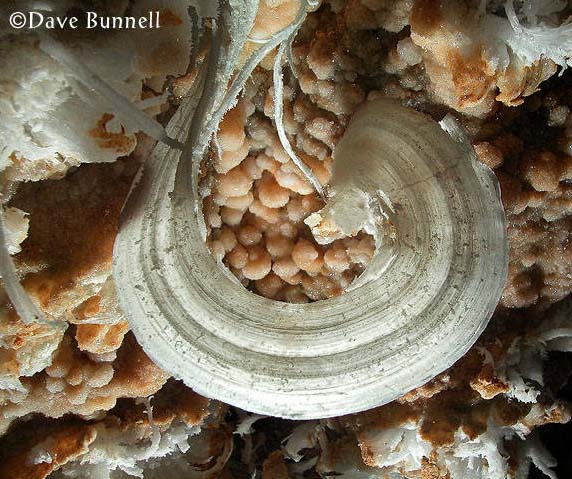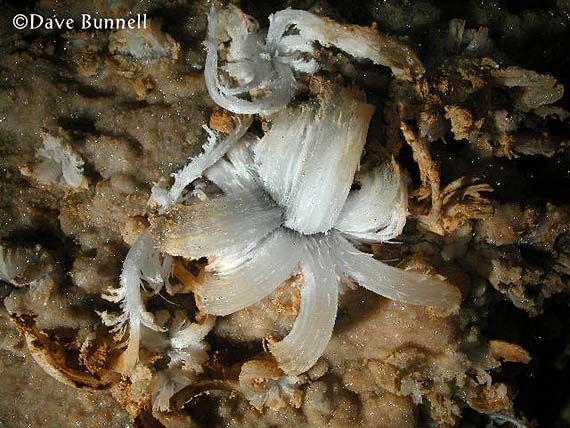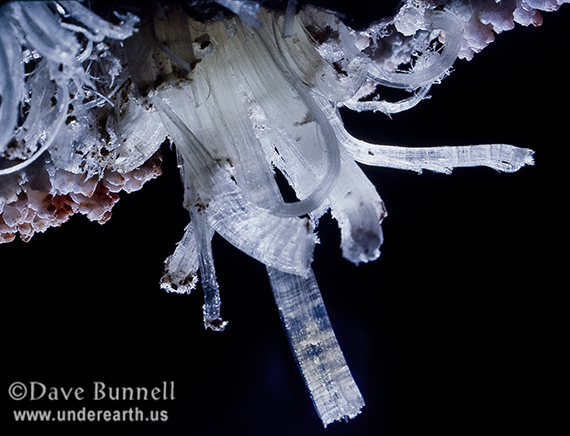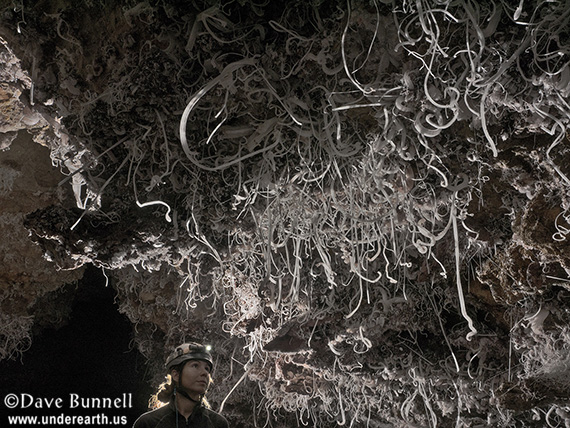
Flowers are speleothems with crystal petals radiating from a central point. The petals are fibrous or prismatic crystals growing in a parallel orientation. They are usually made of sulfate minerals such as gypsum or epsomite, but can form from halite, or rarer (for caves) minerals. Flowers grow from the base, not the tip as does a stalctite. Often they will carry a portion of the wall away as they grow, forming a crust on the end of the flower. Flower growth in crevices may contribute to portions of the wall breaking off and becoming breakdown. This growth mechanism is similar to that for more fibrous forms of these sulfate minerals. All of the photos below are of gypsum flowers other than the third photo, which shows an epsomite flower. These tend to be more translucent than the gypsum variety and are much less common. As you can see, flowers can take on quite a few forms and get quite large. The largest single petal known is from a cave in the Grand Canyon of Arizona, and is 6.5 feet long! |
![]()




.jpg) |
.jpg) |
.jpg) |
.jpg) |
.jpg) |
.jpg) |
.jpg) |
.jpg) |
Choose a thumbnail to see more images of gypsum flowers.
Once you have
enlarged an image, use the arrow keys to scroll through all of them.
![]()
| Back to: | |
 |
Created: November 17, 1995 Updated Dec. 13, 2016 |